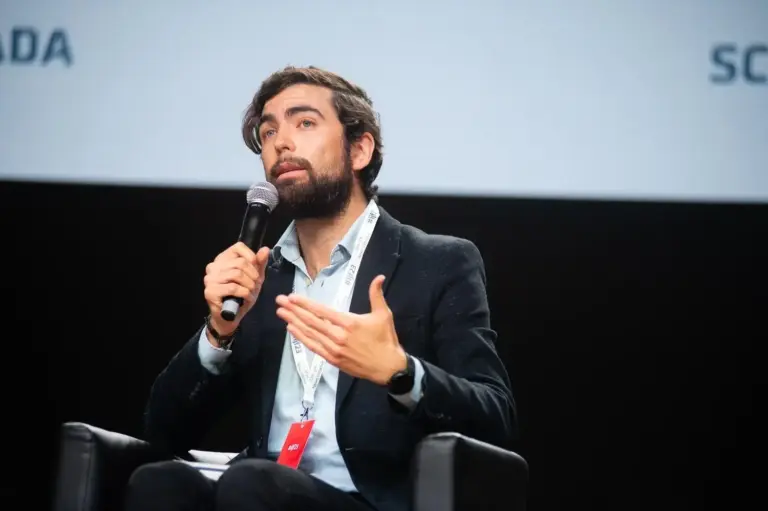Narrative of suppression of freedom of expression being promoted under a conspiracy: Fawad
ISLAMABAD: Minister for Information and Broadcasting Chaudhry Fawad Hussain on Tuesday said the narrative of a gag on freedom of expression in Pakistan was being promoted under a conspiracy.
The minister, in a tweet, said a specific group was running the propaganda campaign to bring Pakistan into the ambit of the Financial Action Task Force and other such regulatory networks.
Some ”fake groups” from abroad first started disseminating ”fake news”, and then a ”certain indigenous gang” in Pakistan spread it without having any knowledge about the contents, he added.
Fawad’s reaction comes a day after Paris-based Reporters without Borders published a report titled: “Press freedom predator’s gallery — old tyrants, two women and a European”.
Referring to Prime Minister Imran Khan, the group said “cases of brazen censorship are legion since Khan became prime minister” following parliamentary elections in 2018. It said that during PM Khan’s rule, the distribution of newspapers was interrupted, media outlets were threatened with withdrawal of advertising and TV channel signals were jammed.
“Journalists who cross the red lines have been threatened, abducted and tortured,” the media watchdog said.
Pakistan vehemently rejected international media watchdog’s report.
The Foreign Ministry said in a statement that it is quite surprising that RSF has jumped to the conclusion that media in Pakistan is under “increasingly draconian censorship measures by Imran Khan’s government”, despite the fact that the current government has been taking all possible measures to create a congenial environment for journalists to perform their professional obligations.
What else did the RSF report say?
The RSF reported it was publishing a gallery of grim portraits, those of 37 heads of state or government who crack down massively on press freedom. Some of these “predators of press freedom” have been operating for more than two decades while others have just joined the blacklist, which for the first time includes two women and a European predator.
Nearly half (17) of the predators are making their first appearance on the 2021 list, which RSF is publishing five years after the last one, from 2016. All are heads of state or government who trample on press freedom by creating a censorship apparatus, jailing journalists arbitrarily or inciting violence against them, when they don’t have blood on their hands because they have directly or indirectly pushed for journalists to be murdered.
Nineteen of these predators rule countries that are colored red on the RSF’s press freedom map, meaning their situation is classified as “bad” for journalism, and 16 rule countries colored black, meaning the situation is “very bad.” The average age of the predators is 66. More than a third (13) of these tyrants come from the Asia-Pacific region.
“There are now 37 leaders from around the world in RSF’s predators of press freedom gallery and no one could say this list is exhaustive,” RSF secretary-general Christophe Delores said.
“Each of these predators has their own style. Some impose a reign of terror by issuing irrational and paranoid orders. Others adopt a carefully constructed strategy based on draconian laws. A major challenge now is for these predators to pay the highest possible price for their oppressive behavior. We must not let their methods become the new normal.”
The RSF said the most notable of the list’s new entrants are undoubtedly Saudi Arabia’s 35-year-old crown prince, Mohammed bin Salman, who is the center of all power in his hands and heads a monarchy that tolerates no press freedom.
The new entrants also include predators of very different nature such as Brazilian President Jair Bolsonaro, whose aggressive and crude rhetoric about the media has reached new heights since the start of the pandemic, and a European prime minister, Hungary’s Viktor Orbán, the self-proclaimed champion of “illiberal democracy” who has steadily and effectively undermined media pluralism and independence since being returned to power in 2010.
The first two women predators are both from Asia. One is Carrie Lam, who heads a government that was still democratic when she took over. The chief executive of the Hong Kong Special Administrative Region since 2017, Lam has proved to be the puppet of Chinese President Xi Jinping, and now openly supports his predatory policies towards the media. They led to the closure of Hong Kong’s leading independent newspaper, Apple Daily, on 24 June and the jailing of its founder, Jimmy Lai, a 2020 RSF Press Freedom laureate.
The other woman predator is Sheikh Hasina, Bangladesh’s prime minister since 2009. Her predatory exploits include the adoption of digital security law in 2018 that has led to more than 70 journalists and bloggers being prosecuted.
Some of the predators have been on this list since RSF began compiling it 20 years ago. Syria’s President Bashar al-Assad and Ali Khamenei, the Supreme Leader of Iran’s Islamic Revolution, were on the very first list, as were two leaders from the Eastern Europe and Central Asia region, Russia’s Vladimir Putin and Belarus’s Alexander Lukashenko, whose recent predatory inventiveness has won him even more notoriety. In all, seven of the 37 leaders on the latest list have retained their places since the first list RSF published in 2001.
RSF published a list of Digital Press Freedom Predators in 2020 and plans to publish a list of non-state predators before the end of 2021.
Source: Geo News


